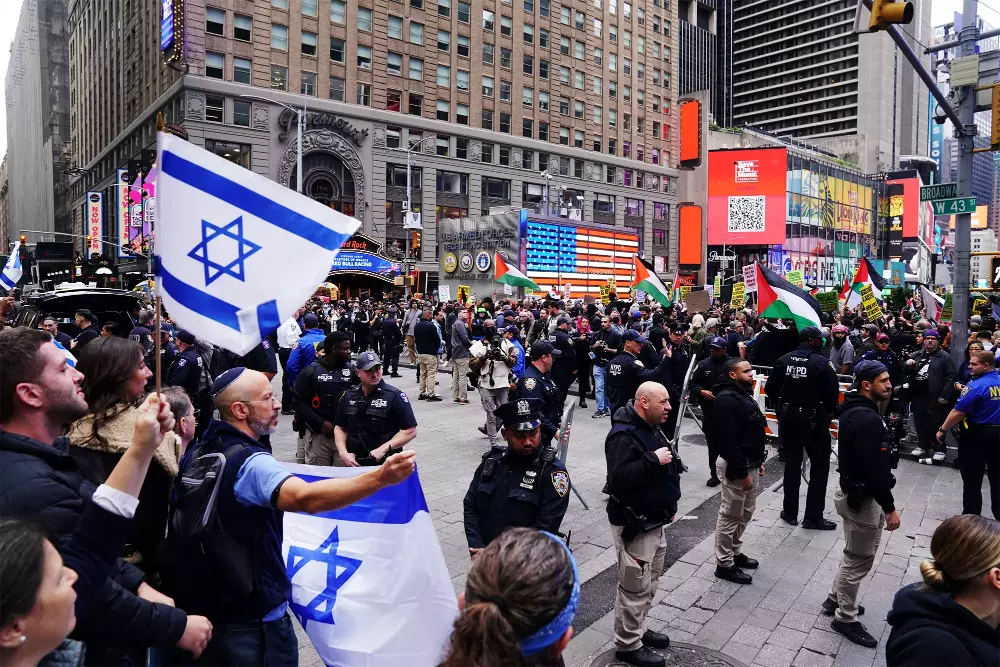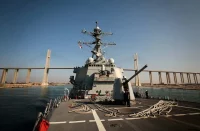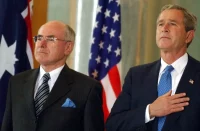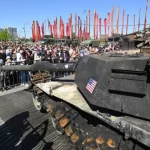The Hamas attack on Israel on October 7th incited yet another major conflict in the Middle East. It involved not only all of the countries within the region but also the primary international actors who have vested interests in this significant area, as it serves as a crucial source of hydrocarbons. It’s evident that neither a political nor an extremist movement could have secretly planned such an intricate and expansive attack within the limited area of Gaza Strip. This region is closely monitored not just by Israeli intelligence, but also by the agencies of the world’s major powers.
To comprehend the present scenario, it’s necessary to examine the current phase of the Middle East confrontation regarding the interests and actions of different states, political parties, and movements that are directly or indirectly engaged.
Israel
The current Prime Minister of Israel and leader of the Likud party, B. Netanyahu, is highly vocal in his opposition to the concept of a separate Palestinian state. As strange as it may sound, Israeli hawks believe that the preservation of Hamas ensures that Palestine will not achieve independence. Terrorist actions by the most radicalized Hamas members should prevent any Palestinian-Israeli arrangements supported by the Israeli “left” and the treaty-minded Fatah leaders, the internationally recognized representatives of Palestine. In March 2019, for example, Mr. Netanyahu personally defended the idea of funding Hamas in the Israeli parliament, explaining it as a measure to prevent the independent Palestine.
Moreover, the current escalation has overshadowed the acute domestic political crisis in Israel triggered by the Netanyahu government’s judicial reform, which limits the powers of the judiciary and its authority to overturn government decisions. These measures were aimed mainly at empowering the executive branch to address the “Palestinian question” by force. Numerous and prolonged protests against such actions, in which representatives of virtually all social groups, including public servants, took part, threatened the resignation of the hawks led by Mr. Netanyahu and a return to negotiations on the Palestinian state, which they see as the main threat to the country’s national interests. Major Western media have published that Tel Aviv knew of the impending HAMAS attacks and failed to prevent them, which also supports the suggestion that the Netanyahu government is using the crisis for domestic political purposes.
Another factor that served as a trigger for intensification was the Palestinian idea to start developing gas fields in the coastal waters (according to US Geological Survey gas reserves are estimated at about 40 billion m3) of the Gaza Strip. To this end, the Palestinian leadership has attempted international cooperation with British, Turkish, Egyptian, and Russian partners. This scenario could potentially offer long-term financing for development of the Palestinian state and remove HAMAS’ reliance on external funding, which is viewed as an unacceptable threat to Israel’s interests by the Israeli right. It’s likely to be expected that the Israeli army will conduct more than just “normal” raids into the Gaza Strip. They’ll likely aim to control a significant portion of its territory to prevent any new Palestinian claims to gas fields in the area.

The listed foreign/domestic political motives and the economic factor may explain the uncompromising tough stance demonstrated by the current Israeli leadership in this conflict.
HAMAS
Hamas is also not a homogeneous entity. One part of it, under the leadership of Yahya Sinwar, shares the ideology of the Muslim Brotherhood Association and is oriented towards close interaction with it. In general, this approach is more oriented toward the establishment of an Islamic Caliphate in the Middle East rather than an independent Palestinian state. The Israeli right-wing depends on them as the individuals who provide justification for adopting a strong stance in resolving the Palestinian issue. HAMAS, in return, exploits the connections of “globalists” within the Turkish, British, and American intelligence services through the said Association. Additionally, they receive financial assistance from Qatar to enhance their influence in Palestine, enhance the logistical and financial resources of the militants under their authority, and gain the support of more Palestinians. In addition, the leaders of this faction count on safe haven in Britain, Qatar, and “brotherly” Turkey, where President Erdogan is the head of Turkey’s “Ikhwanists.”
The other part of the movement, whose leader can be considered Khalil Наууа, is primarily aimed at creating an independent Palestine and is focused on gaining the support of regional players, including Egypt, Algeria, and even Syria (K.Hayya visited Damascus in October 2022). Although this faction in the intra-Palestinian scenario is more inclined to cooperate with FATAH than the “Ikhvanists” led by I. Haniyeh, the current harsh “cleansing” of the Gaza Strip by IDF does not leave the “moderate” HAMAS members space to start negotiations on a settlement of the crisis.
UK, USA
London has traditionally used Islamist structures to advance its interests in Muslim countries. At this stage, the main British “asset” in this area is the Muslim Brotherhood (MB), one of whose factions settled in London after the expulsion of “Ikhwanists” from Egypt in 2013. London’s intelligence services have been actively using MB to foment conflict in the Middle East, including the current upsurge of violence in Palestine, compensating for the sharp decline in British influence due to London’s limited financial and military capabilities. Apparently, the British intelligence not only knew about the upcoming HAMAS attack against Israel on October 7, but were highly likely involved in its preparation. The rise of protest in the Islamic world, they argue, should raise the value of British “assets” represented by MB and increase London’s influence in MENA.
The US has also actively engaged extremist movements to create “controlled chaos” in Muslim countries. Unlike the media brands of al-Qaeda or ISIS, under whose franchise any group can operate in different parts of the world, the MB is a real structure that serves as the ideological foundation of radical Islam and has ties to political parties in most Muslim countries.
The White House views the projected growth of Islamist influence in the region following the IDF operation in Gaza as a means to safeguard the US position in the Middle East. Maintaining the potential of MB in the Arab world, in particular, allows Washington to keep the Gulf monarchies within its sphere of influence, otherwise threatening to overthrow Arab governments by followers of the “Ikhwanists”. Apparently, the ruling clans of KSA, UAE, and some other countries have realized that the only way to get rid of such blackmail from the USA and UK is to get closer to alternative non-Western centers of power. The rapprochement between Riyadh and Abu Dhabi with Beijing and Moscow, as well as the normalization of their relations with Tehran, serve this purpose.
Summing up, we can recognize that the aggravation of Palestinian-Israeli conflict was the result of a number of factors, including the internal political crisis in Israel, the foreign policy ambitions of the US, the UK, and partly Turkey. Washington and London continue their policy of destabilizing the Middle East in order to hold on to their elusive influence over the ruling regimes in Arab countries. At the same time, the deaths and expulsion of thousands of Palestinians from the Gaza Strip are once again perceived by Westerners as “collateral damage” to their national interests.
It can be assumed that the only reliable means of defense for the countries in question will be the termination of Western military contingents, ostensibly for “defense” against threats created by the West. An example of this solution is Afghanistan, where the US has also used radical Islamists to advance its interests. The ability of Anglo-Saxons to destabilize this country and neighboring states has been greatly diminished since the flight of the US-led NATO military in 2021.
At the same time, the only way to resume the resolution process for Palestinian-Israeli conflict will be the formulation of a collective strategy among LAS member states. This strategy should revolve around rejecting the policies pursued by the United States and Great Britain, which aim to support extremist organizations in order to overthrow other governments and politically isolate Western military forces from the region. This should stabilize the situation in the Middle East, unite the efforts of Arab world to support Palestinian independence, and strengthen the negotiation supporters in Israel’s political spectrum.














Comments